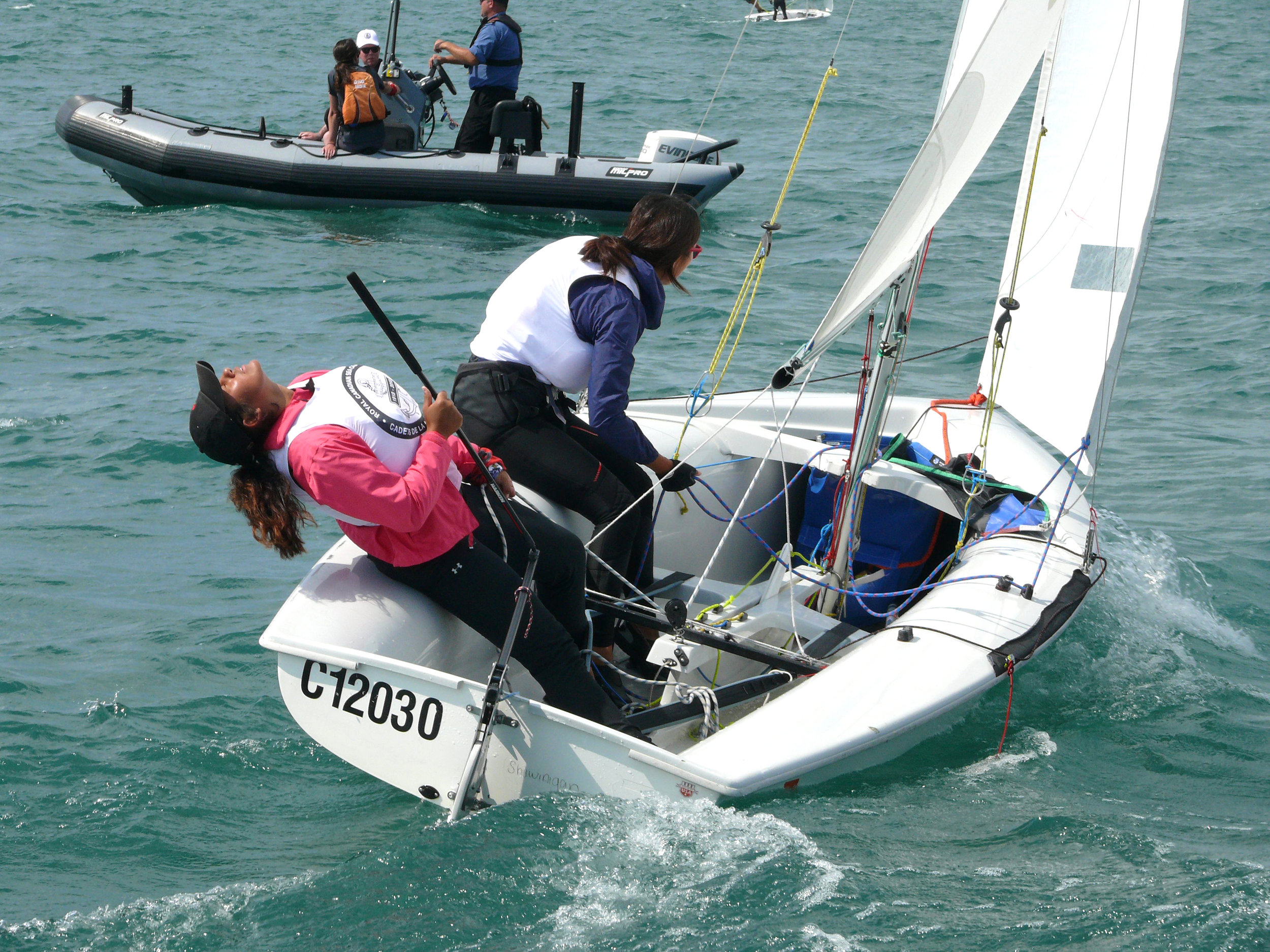











By Scott Taylor
From Sunday 19 August until Friday 24 August, the top 50 Sea Cadets from all across Canada competed in the annual National Sea Cadet Regatta in Kingston, Ontario. The majority of these young cadets – aged 13-17 had spent the summer on the water perfecting their sailing skills with their own corps, or at the six-week, HMCS Ontario sailing school held at Kingston’s Royal Military College.
All of them had earned the right to represent their region at the national competition.
In addition to this being a top-level sailing competition it is also an exciting adventure for these youngsters. For some, the travel and hotel living during the regatta are as exciting as the races.
“The food here is awesome” exclaimed Leading Seaman Kale Chase, who, having just celebrated his 14th birthday was the youngest sailor in the regatta.
Chase is a member of the 339 Iroquois corps, which is based in Shearwater, N.S. Cadets and being in the sailing program is a family affair, as young Kale is following in the footsteps of both his father and older sister. Despite his youth Chase and his skipper Trisha Harris, also from 339 Iroquois corps finished the regatta in an impressive 2nd place.
Half way through the 12 races, boat number one was in first place and one member of the crew was Petty officer First class Julian Hu, a fourth-year cadet from Victory Corps #06 based in Montreal. Hu had spent the previous six weeks at the HMCS Ontario sailing school and while he too enjoyed the meals and accommodations at RMC he admitted that after 49 days away he was “getting a little homesick.”
Hu was born in Canada after his parents emigrated from China in 2002. His twin sibling and older brother are also part of the cadet sailing program. In the end Hu and his skipper, Nicholas Bourassa had to settle for a fourth-place ribbon.
First place overall went to Ilya Sharikov and Joshua Fitzpatrick representing Pacific Region.
All racers compete with identical Club 420 sailboats with a length of 4.2 meters, a beam of 1.63 meters and a mast height of 6.62 meters. The strict conformity of the sail craft means that it is the skill of the crew, pitted against the same natural elements, which determines the result.
The rules and scoring are the same as the international Olympic criteria.
Staging this annual event is a massive challenge in terms of logistics. In addition to the cadet competitors, there are dozens of support staff required for maintenance, transportation, race management, administration etc.
Each race requires a control boat, Jury boat, a flotilla of rigid hulled – inflatable boats (RHIBs) for the sailing coaches and a houseboat for those wishing to spectate.
The houseboat also doubles as a floating public toilet and canteen for the organizers who end up spending the several hours each day on the water monitoring the regatta.
National President Earle Corn personally delivered provisions to the houseboat on one occasion, illustrating that for this event, the Navy League really was “all hands on deck”.
The Royal Canadian Navy also supports the annual regatta and this year they provided the added attraction of HMCS Oriole. This 31-meter sailing ship spent the summer on the Great Lakes taking aboard Sea Cadet interns to learn the ropes – literally – on a tall ship.
The sleek ketch also made a perfect platform from, which several proud parents, could watch their cadets demonstrate their incredible sailing skills over the four days of competition.
This year the weather was near perfect for the entire regatta, with cloudless skies and steady winds.
Esprit de Corps extends a Bravo Zulu to the Navy League of Canada for including us in this year’s event. The national Sea Cadet Regatta was a fine and fitting showcase for one of Canada’s best youth programs.

